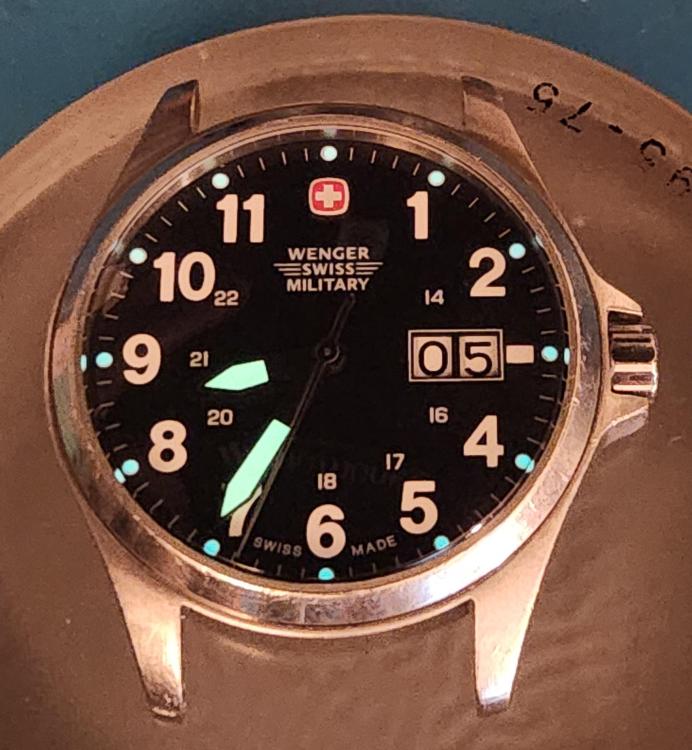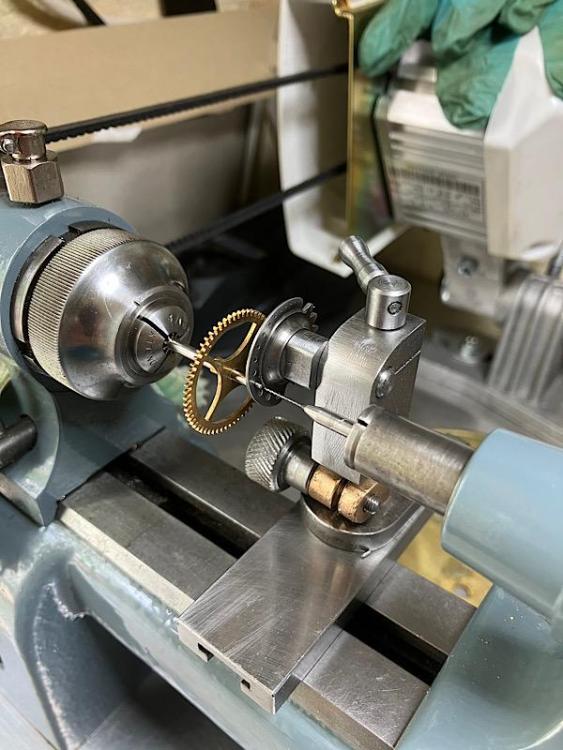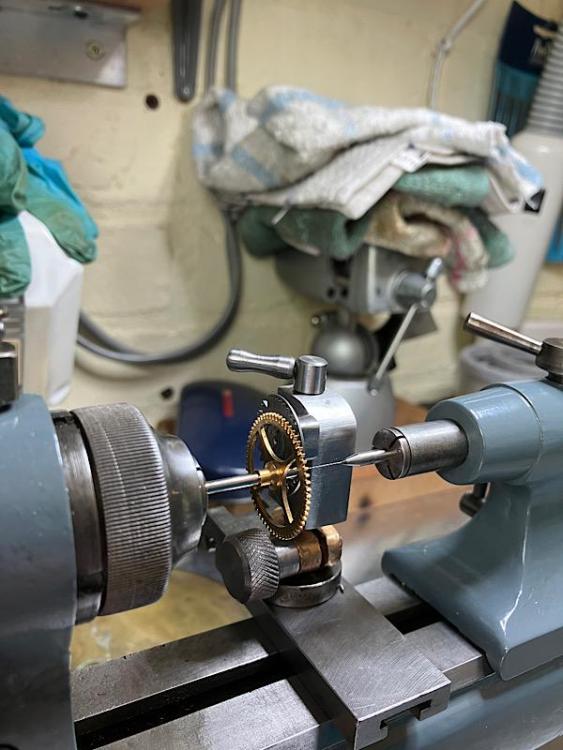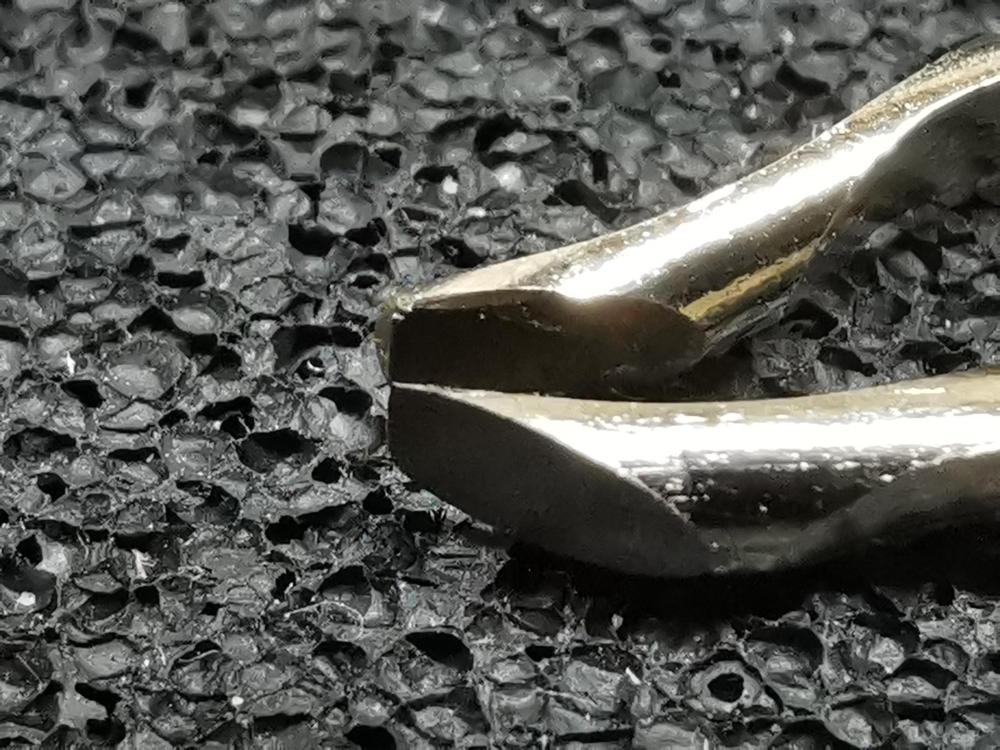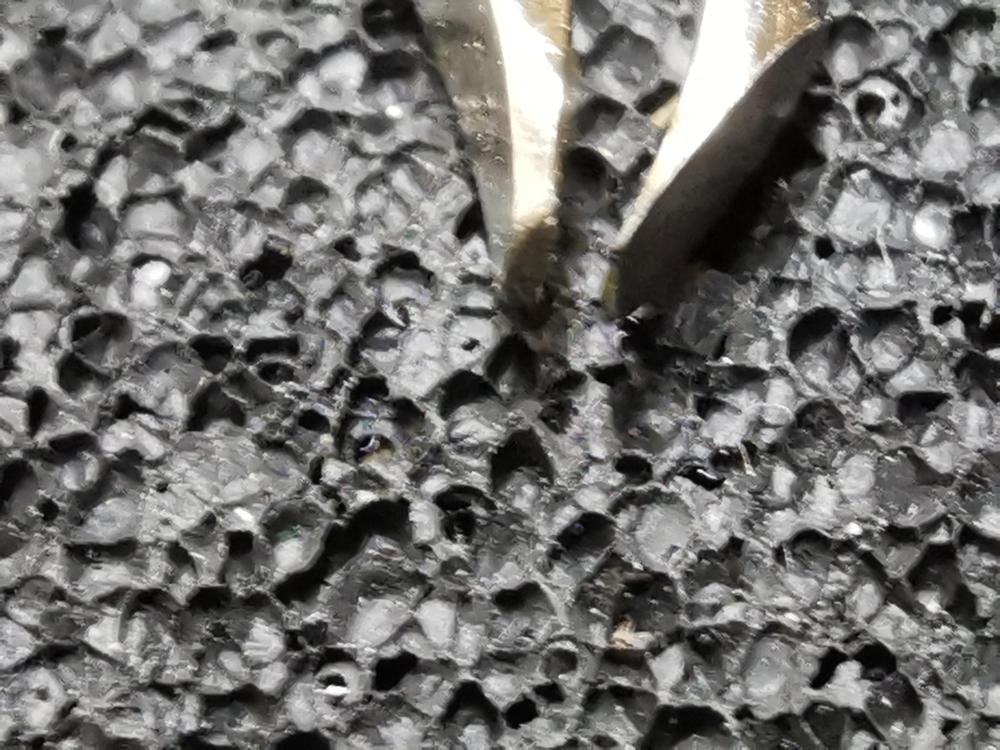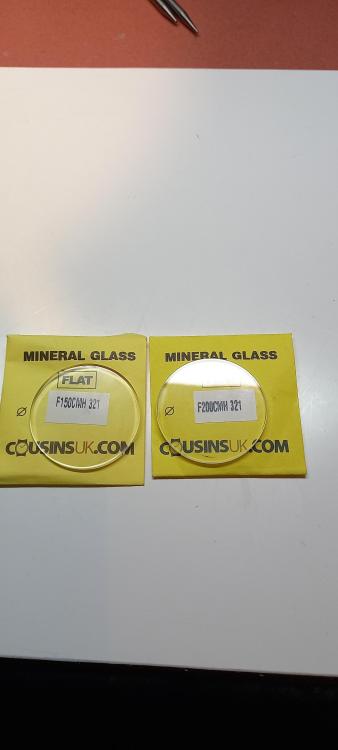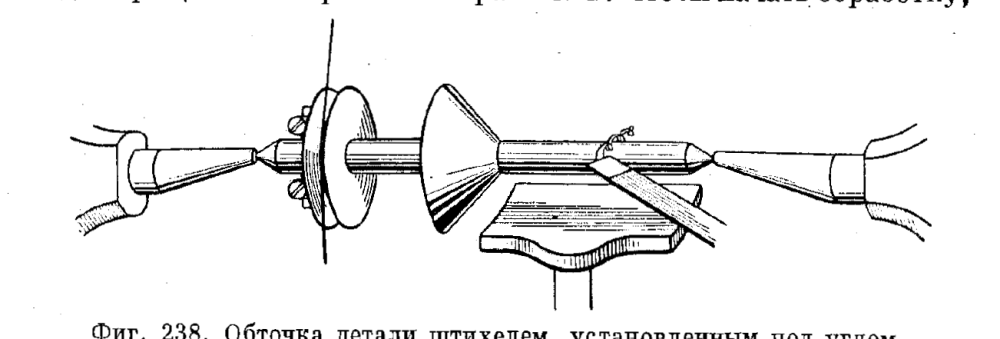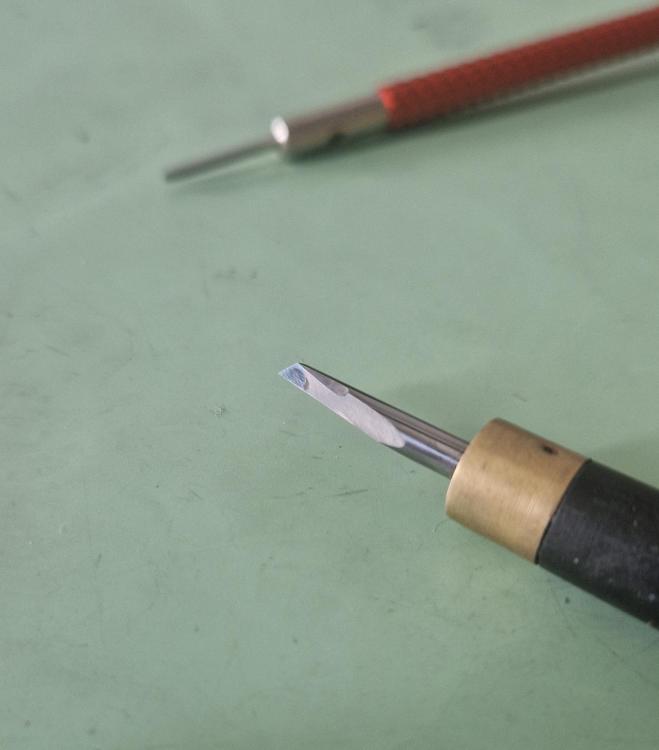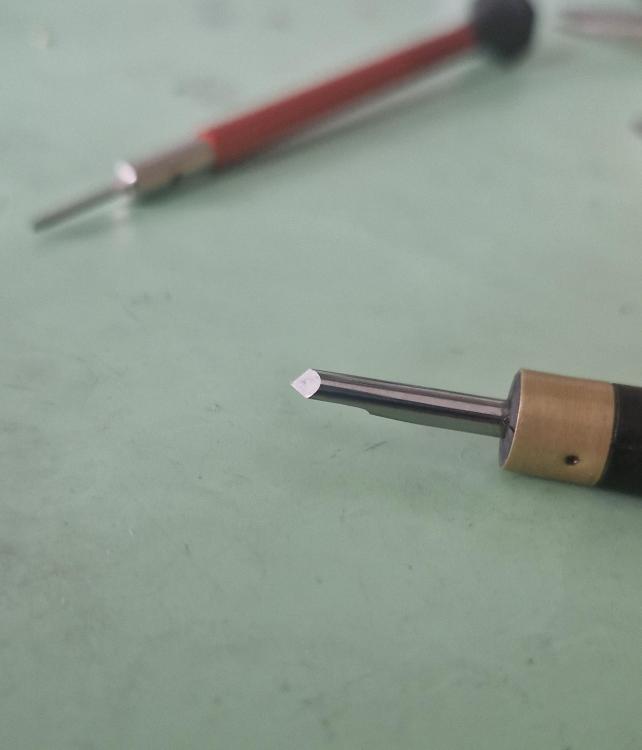Leaderboard
Popular Content
Showing content with the highest reputation on 07/06/24 in all areas
-
Another update Time has passed. What can I do as an amateur. Open a watch without damage. Assess problems. Disassemble without damage. Assess what needs to be done. Clean and repair damage parts. Specialist working Use of Staking set. Use of Gem setting tool. Replace mainsprings manually, or with tool. Repair hairsprings. Regret that I am not capable of hairspring pin insert. Not capable of pin replacement. Time setting, I can do. As an amateur, I do feel confident that I am fulfilling my aim to serve my self imposed apprenticeship, which I hope will never end. A good look at myself. 76 years of age. Working on a computer table. Well I mean. Ah well. Not running a business. Armature only. Working on own watches, ebay etc. I do want to get better, Only practice will achieve that. I am now contemplating working on my own high end watches. I do feel confident enough now. Aims? I did think of the qualification route. BHI route. Not for qualification, but for knowledge and increase capabilities. When I did contact BHI, they were very good to me. Answering my questions without influence. The emphasis on toolmaking and use of lathe put me off. Yes, the cost was also a factor. Total cost in excess of £3,000 was my calculation. BHI membership, course, tutor, tools, travel and accommodation. Better for me is a hands on training. Would love to do Jon the watch's course. But, too far. Mark Lovick's distance learning course still stands solid. Done, and still doing Mark's course. Level 3 I can now absorb. Chronographs? Another few years. I am now levelling out as I realise my standard of capabilities. Onward and practice. Ross Entered in wrong forum. Can moderator please move the post to Current Achievements?8 points
-
5 points
-
Old engineer too... I throw away things only whem my wife gets in my workshop. Unpleasant situation.4 points
-
Once those were really good. You can make everything even a bit cheaper and worse.3 points
-
My guess is that we have a lot of "old" engineers on this forum.3 points
-
I discovered a small but noticeable sprig of metallic accumulation on the underside of the pallet fork at the heel of the fork slot. I demagnetized the whole watch (without the balance) before Tempo 400 cleaning cycle. I removed this and recleaned the pallet fork and all seems to be fine as it has run and kept time overnight in the dial-up on my bench. The wear test will be next. Perhaps this was enough of an issue to disrupt the works. Yes, I do have a Renata 344 arriving any day. The 394 was all I had to test with and I was sure to keep it centered in the battery well. Thank you for the replies Yes, the sound was just before the balance would stop.3 points
-
I had a spare 5 mins yesterday so I took a look at the first of the "three for a quid" I picked up recently. A new battery, a new strap and a fumigation of the case and it looks like new. Perhaps its most impressive feature is the lume. In the dark, it lights up like Hollywood nuclear spill, and even in daylight it has a slight glow. Well worth thirty three and a third pence I would say.3 points
-
So my new HSS graver arrived, I’ve had a quick use of it. Definitely put the fun back into lathe work.2 points
-
The first set I got were like that - a total waste of space. I found some cheap ones on ebay that were far better, with very fine tips. They are no use as they are so try grinding them!2 points
-
2 points
-
2 points
-
This is not heat treatment, it’s oxidation or tarnishing. If you look at some older nickel plated movements you will sometimes see darkened areas which if you play with the light show a rainbow of colours. This is a similar phenomenon and it has happened at what looks like the edge of an area where some plating has worn off the brass plate. Best Regards, Mark2 points
-
I see, sorry. If You need real result with no problems, move to carbide cutters, as I showed above.2 points
-
The NSW TAFE course seems a bit sporadic, it wasn't running when I inquired about it a few years ago. Be interesting to hear what you find out from them. It's disappointing there are no courses being run out of Melbourne/Victoria, I would have jumped at it. It's taken me a long time to realise I'm a hands-on practical learner, after struggling through a number of different courses for various qualifications... BHI are generous in having no time limits for when you choose to sit an exam or finish any of the Diplomas. Which is just as well at my rate of progress2 points
-
You hardened what, HSS gravers? How exactly, do You know what HSS is?2 points
-
yes exactly. Normally if as a mechanical watch would be looking at the amplitude dial-up and dial down to see if we did see a problem. On electric watch the only way he could do that would be if we were measuring the current consumption words is her additional friction or something. But typically people working on electric watches don't have proper test equipment. Is also a test for dampening of the balance wheel in other words you rotate it release it and it's supposed oscillate a certain amount of time and that should've been done I both dial down and dial up looking for a problem. It may be that the sound were hearing at the very end when it stops may actually be occurring at all the time but when it's moving really freely fast maybe it's not really being heard it's only when it finally slows down. So a classic would be look at the pivots and the jewels see how they look.1 point
-
@mikepilk You may want to check out this website that shows plating of 3.0 to 3.6 microns as being achievable. https://www.hunterproducts.com/store-pen/1 point
-
I understand that by calling it quartz mechanical I was wrong. The point I was making was that it still has a spring balance, pivots and jewels as a mechanical watch, any of which could have been the cause of the OPs problems.1 point
-
I have two sets, one very cheap, one cheapish. I dressed the very cheap ones and they work great.1 point
-
1 point
-
Pen plating gives verry thin layer and it will not help to repair the wear but only cosmetically. If the watch will stay in a box or collection, then OK, but if it will be used, then the brass (the base metal) will show up after 3 days. Then, the color of the pen goldplating may differ from the rest of the case or strap color.1 point
-
yes the whole case is wrong. yes the case back number and the serial number found on the case refer specifically to the case. I don't think there's any way of cross referencing a movement serial number back to the case. way. this statement is a bit confusing? in other words the customer purchased a defective watch in the wrong case and would like to keep the wrong case just the way it is? Then get the watch running through the back on and don't worry about the automatic as long as a watch runs who cares customer should be happy with their defective watch casing. unfortunate way case back numbers don't work that way. It might be possible if you had access to the Swatch group website may be perhaps you could cross reference a movement to a case. Otherwise you could Google the movement number and find somebody selling a watch like this is an example and then you get a case number https://www.chrono24.sg/omega/omega-seamaster-automatic--20-microns-gold-plated-case--ref-1660202--cal-1012--id35164183.htm1 point
-
Thank you for allow me to joining this beautiful community with passion for watches, I found this hobby interesting not long time ago. I am interested to learn things about watches, how to fix classical watches. Best regards from Romania, Zozo1 point
-
1 point
-
Thank you for your introduction and welcome to this friendly forum. We all look forward to your contributions and continued involvement. If there is anything we can help you with don’t be afraid to ask. Nice clear photos can help a lot. You might find this helpful. 704789946_TZIllustratedGlossary(2).pdf1 point
-
Yes I’ve come around to that idea, I used to use carbide in my engineering days, but this is a new way of working that I’m still transitioning to. I’ve ordered a HSS graver to practice with it. I have a load of broken drill bits that could work. Old engineer never threw them out1 point
-
I still have some hss chisels from my wood turning days, bloody hard stuff compared to carbon identifiable by the sparks when sharpening it up. Thin dark orange where carbon has broad bright yellow sparks. It certainly comes as already heat treated which i believe it to be a pretty complicated process. If you want to try hss then some good quality steel drill bits, they have a good portion of tungsten content.1 point
-
If its the stronger voltage, how come it doesn' over-bank in DD. What does the electric contact/ point on 683 look like, could it be bent. How long does it run before stopping? Rgds1 point
-
I'm going to make a speculation on something? If you look at the watch companies they have timing procedures so in the case of Omega a fully wound watch is fully wound up wait 30 up to 90 minutes and that's considered fully wound up. so it interesting problem may occur with a watch on your wrist that you wouldn't notice if you followed your timing procedure of letting it settle. So on your wrist is it conceivable you to get that last little bit before the mainspring slips what if it doesn't slip exactly where it's supposed to what if you go past which you probably do. So if you're actively moving a wrist and you go past the fully wound up position just before it slips could you have enough energy to be too much energy? So maybe they have a safety factor here. looking at Rolex we get some amusing conflicts because one of the service manuals I know is 310° whereas the other source I'm looking at is 300 for the most part with the 1520, 1530 series 280°. then Omega has way more watches the Rolex covering multiple pages of documentation fortunately maximum amplitude is specified on the various specifications page so I'll just snipped that out. Of course the amusements with Omega is minimum amplitude at 24 hours unlike Rolex it's 200° Omega I could take as low as 160 on some caliber's. Or basically scattered across several pages is 160, 170, 180, 190 and 200 just depends upon which caliber it is.1 point
-
With tax and shipping to the US still like £3.50!1 point
-
Hi there, You need to do the free oscillations test.Remove everything from the movement from this side and put back only the balance with it's cock. In this configuration You have best chance to look at the hairspring and see if there is something wrong with it. Turn the balance to 180 degr. and release it to oscillate free. The expectation is about 100 oscillations to full stop if everything with the balance is OK. The hairspring should not touch anything. Is it concentric? Is there enough free spacece between it and balance spokes and the cock? Is there small 'healthy' axial free paly of the balance?1 point
-
After over an hour of sanding disks and not really getting anywhere I thought to myself " what the hell am I doing " a new glass from cousins is a couple of quid . The one on the left is my effort, looks clear but is covered in micro scratches with the highest grit of wet and dry i had, anything less than diamond compound isn't getting them out.1 point
-
Thats how I've always learnt right from the start. Is there no time limit involved in completing the BHI course ?1 point
-
1 point
-
Interesting about the amplitude. I serviced a similar movement for a friend (cal 2230) and without a new mainspring, amplitude was about 300°. I remember reading something about some manufacturer (it was either Omega or Rolex) not wanting amplitude above 290° for some movements. Don't know why. Maybe some movements more prone to re-banking? I wish I could remember more. Maybe someone who services Omega/Rolex ( @nickelsilver, @JohnR725 could elaborate (or was I dreaming)?1 point
-
I'll admit it was several years ago that I looked for courses in Australia so I am surprised to see something up and running again. I may contact the NSW Take to see if there is any sort of option to do their course without having to attend constantly. I don't like my chances though. Maybe will be able to do the course in blocks. Getting to Sydney from Geelong isn't that expensive, but having a job tends to get in the way of taking off for weeks at a time.1 point
-
Australia has a scarcity of watchmaking training, but @Michael1962 I believe both of those courses you mentioned are still running. Watch and Clock School of Western Australia are accepting registrations for next year (2025) according to their website. I was looking into their course options at one point but the logistics of me flying over to Perth to do a course wasn't going to work (I'm in Melbourne). TAFE NSW still offers a Certificate III in Watch and Clock Service and Repair. Usually you would need to be doing an apprenticeship within the industry to be able to enrol, but I recall there being some way of taking the course without the apprenticeship. I ended up signing up for the BHI distance course and have since been ambling along trying to make my way through all the lessons of the Technician grade. I haven't signed up for tutor feedback but as already mentioned this can be added at any point. A large part of the course involves learning about clocks, and many of the practical exercises start you off making small tools and clock components. Unfortunately various life factors have meant I've made little progress in two years. I also find myself using my free time to repair my actual watches rather than engage with the course - I seem to learn better when I come across a particular skill I need to learn or an actual problem to be solved in something I'm working on.1 point
-
Something important about the cutting itself. No mater what kind of cutter - the steel ones can easy get dull, carbide ones can chip easy. One have to be carefull not to break the tip in both cases... On the picture is shown the correct position of the cutter when cutting most of the work. Pay attention where the shavings come out from. They get out from the middle of the cutting edge of the cutter, the tip is not engaged in the routine cutting at all. The tip is only used to form sharp internal angles. This way of holding the cutter gives longest time between sharpenings and eases cutting. Try to understand and use it and wili be pleased by the result.1 point
-
I will advice to do what I do - I make gravers out of this kind CNC router bits. I reshape and sharpen them with such kind of diamond disk, grit 800, dry. No polishing needed, just sharpening.1 point
-
When I was in school (U.S.) we started with HSS Vallorbe gravers, learned to sharpen them, and eventually got to cutting blue steel with them. Then we got carbide, and I don't think I've used steel since. In the Swiss school I went to, the folks in the full training section were only allowed to use steel (HSS); knowing that, and that they didn't have carbide or diamond grinding ability, I brought my own grinding wheels and carbide, haha. They didn't care if I used it, they just wanted to make the guys learning from the ground-up to suffer.* If you want to try out carbide, Eternal Tools has a good selection of small diamond wheels, as well as carbide gravers. You can also use old carbide drills and regrind them, just fit it to a small wooden handle. If using round blanks you have to grind the sides quite a bit to end up with a traditional shape at the tip. Here's one I ground from a 3mm blank (this was a milling cutter before). You can see that it was ground with a coarse wheel, then a finer finish done where it actually cuts. *Actually just remembered- I also did a course for teachers at the Swiss school, to learn how to teach "their" way. At one point we (there were 5 of us) had to sharpen, free hand, steel gravers, then make pivot gages in the dead center lathes, using a hand crank for power. It was funny to see that some of the teachers hadn't done much turning in years, lots of complaints about the gravers being crap. There was an older Polish fellow who was piling up curly chips as fast as he could turn the crank, and I did OK as I wasn't that long out of school myself and did a lot of turning work for other watchmakers. So we would go to show the other teachers that yes their steel gravers could cut the blue steel just fine, hahaha. The main issue was getting the angle of attack right. So that was the last time I used steel gravers.1 point



